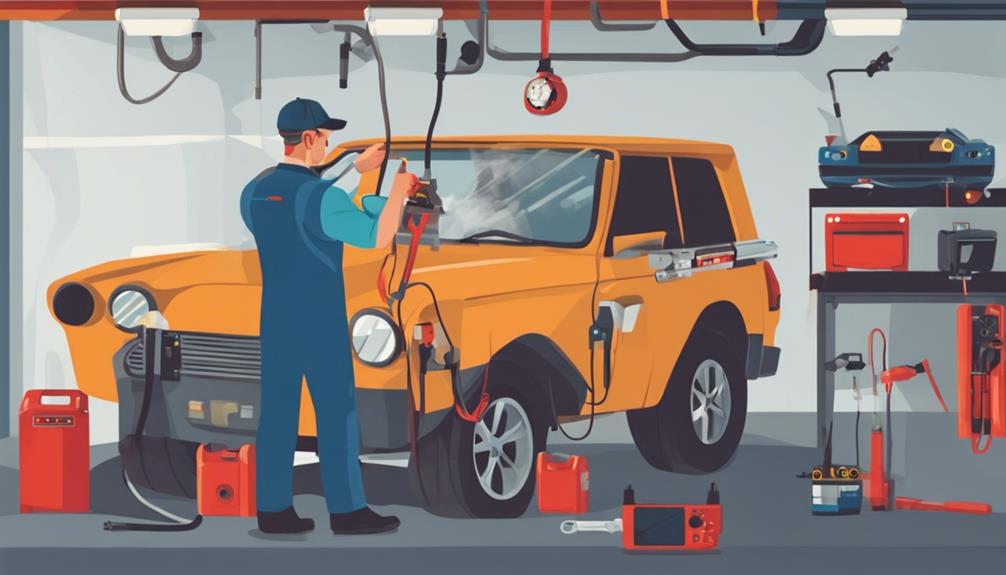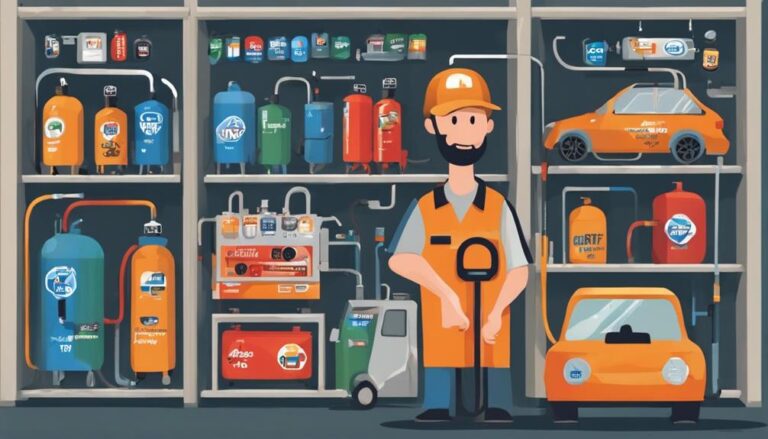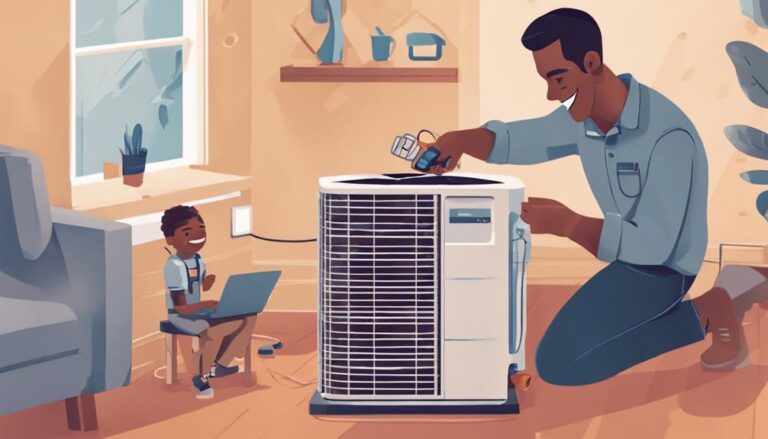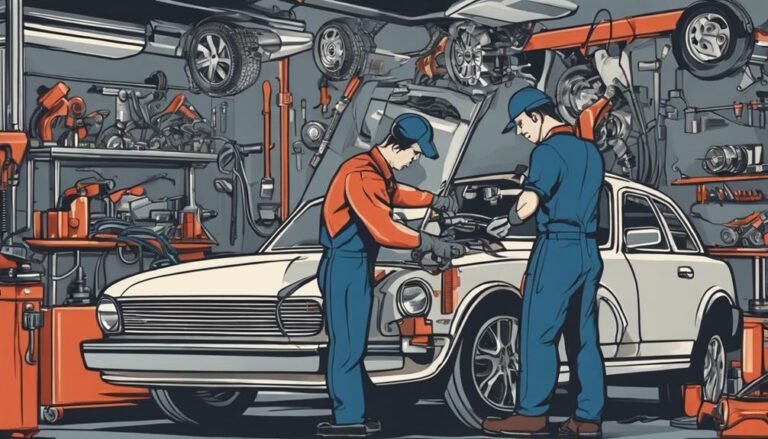Top Tips for Car AC Diagnostics
When it comes to diagnosing issues with your car's AC, as the saying goes, 'prevention is better than cure.' Ensuring your system is running smoothly can save you from sweltering in the heat.
By following a few key steps and knowing what to look out for, you can tackle common problems with confidence. Remember, a well-maintained AC not only keeps you cool but also helps maintain your vehicle's overall efficiency.
So, let's uncover some top tips for mastering car AC diagnostics and keeping your cool on the road.
Key Takeaways
- Listen for unusual noises and check airflow for AC issues.
- Inspect key components like fans, condenser, and filters.
- Look out for compressor problems like leaks and electrical issues.
- Detect refrigerant leaks using UV kits and routine checks.
Common Signs of AC Problems
When diagnosing car AC issues, promptly identify common signs such as unusual noises, warm air, or reduced airflow. These signs often indicate underlying problems within the system that require troubleshooting techniques to pinpoint accurately.
Unusual noises like grinding, squealing, or rattling could suggest issues with the compressor, while warm air blowing from the vents may point to refrigerant leaks or a failing compressor. Reduced airflow might indicate a clogged cabin air filter or problems with the cooling fans. Additionally, musty odors, leaks, or low refrigerant levels are also signs that shouldn't be overlooked during troubleshooting.
To effectively troubleshoot these issues, checking the cabin air filter, compressor, and cooling fans is crucial. Monitoring clutch engagement, refrigerant pressures, and electrical components can provide further insights into the root cause of the AC problems. By recognizing these signs early on and applying the appropriate troubleshooting techniques, you can address car AC issues promptly and ensure optimal performance of the system.
Key Components to Check
Inspect the cooling fans on the condenser or radiator to ensure optimal airflow for the AC system. Proper airflow is crucial for the efficiency of the system. Additionally, conduct a thorough condenser inspection to check for any blockages or damage that may hinder the cooling process. A well-maintained condenser is essential for the overall performance of your car's AC.
Regular maintenance of the cabin air filter is also vital. A clean filter ensures that the air circulating in the cabin is free from dust, pollen, and other contaminants. Neglecting this component can result in poor air quality and reduced cooling efficiency. Therefore, make it a priority to inspect and replace the cabin air filter as needed to guarantee a comfortable driving experience.
Diagnosing AC Compressor Issues
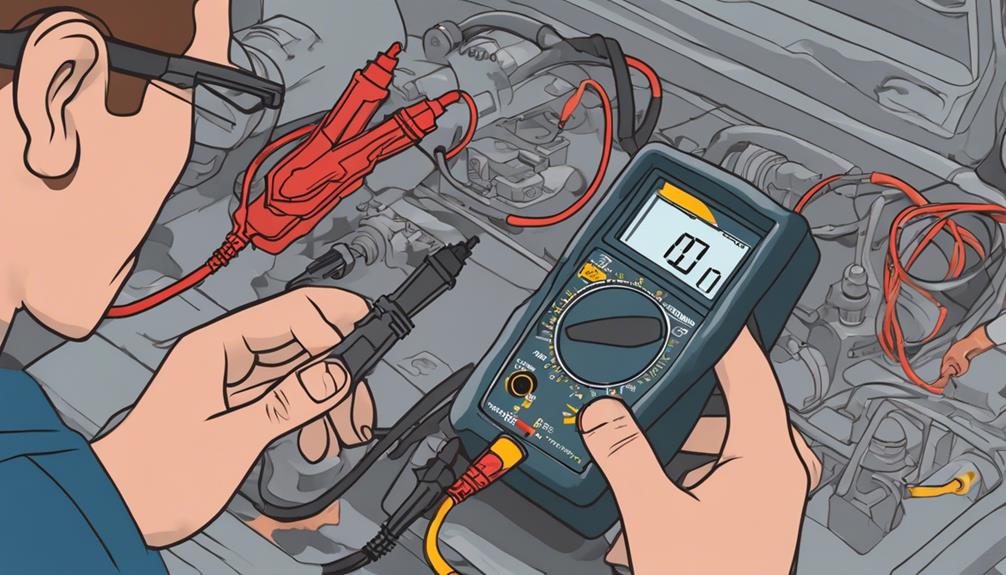
To diagnose potential AC compressor issues effectively, begin by checking for any unusual noises emanating from the compressor, such as grinding or squealing. These noises may indicate internal damage or a failing compressor.
Inspect the AC compressor for physical damage like leaks or cracks, as these can lead to inefficient operation. Use a multimeter to test the electrical connections to the compressor to ensure proper voltage is reaching the unit.
Verify that the AC compressor clutch is engaging properly when the AC is turned on, as a faulty clutch can prevent the compressor from functioning correctly. Look for signs of excessive wear or corrosion on the compressor components, as these can also impact its performance.
Detecting Refrigerant Leaks
For accurate identification of refrigerant leaks, utilize UV leak detection kits. These kits contain UV dye that can be injected into the AC system to help pinpoint leaks under UV light.
Check the Schrader valves, commonly found on the service ports, for potential leaks. These valves can degrade over time, leading to refrigerant seepage.
Ensure all fittings and connections are securely tightened to prevent leaks. Inspect hose manifolds and seals on the compressor for any signs of refrigerant leaks, as these are common areas where leaks can occur.
If a leak is suspected but not visible, adding UV dye to the system can aid in locating the exact source. By utilizing UV leak detection methods and paying close attention to components like Schrader valves, you can efficiently detect and repair refrigerant leaks in your car's AC system.
Must-Know Tips for AC Maintenance

To maintain optimal performance in your car's AC system, implementing essential maintenance practices every 2 years is crucial. Here are some must-know tips for AC maintenance:
- AC Filter Replacement, Benefits: Changing the cabin air filter every 15,000 miles is essential to prevent musty odors in the car and maintain good air quality within the vehicle.
- Fan vs AC, Fuel Efficiency: Using the fan alone instead of the AC can help save fuel and increase overall efficiency, especially during mild weather conditions.
- Refrigerant Leak Checks: Regularly checking for refrigerant leaks using a UV leak detection kit is crucial for maintaining the efficiency and effectiveness of your AC system.
- Fan Speed Optimization: Running the fan at the highest speed periodically can help ensure optimal AC performance and circulation of cool air throughout the vehicle.
Frequently Asked Questions
How Do You Diagnose an AC Problem in a Car?
To diagnose an AC problem in a car, first, identify common symptoms like weak airflow or warm air. Then follow troubleshooting steps: check cooling fans, inspect air filter, use manifold gauge, examine compressor, and verify clutch engagement.
How Do You Diagnose a Bad Air Conditioner?
To diagnose a bad air conditioner, first, identify common symptoms like poor cooling or strange noises. Troubleshooting steps include checking for refrigerant leaks, inspecting the compressor, and testing electrical connections. These actions can pinpoint the issue accurately.
What Is a Good AC Reading for a Car?
To ensure proper AC performance, aim for 25-45 psi on the low side and 200-250 psi on the high side. These readings indicate good refrigerant levels, efficiency, and functional compressor and condenser. Maintaining these levels extends your AC system's lifespan.
How Long Does It Take to Diagnose Car AC Problems?
When diagnosing car AC problems, the time can vary from 30 minutes to 2 hours. Efficient use of diagnostic tools can speed up the process. Simple issues are quickly resolved, but complex problems require more time for accurate repair.
Conclusion
In conclusion, mastering car AC diagnostics is essential for a comfortable and efficient driving experience. By following these top tips and regularly maintaining key components, you can ensure your AC system runs smoothly.
Remember, staying proactive and addressing issues promptly will help prevent costly repairs down the road. So, stay cool and drive on with confidence in your AC system's performance.

